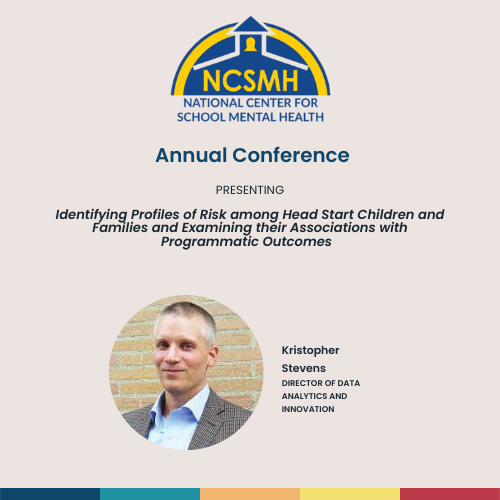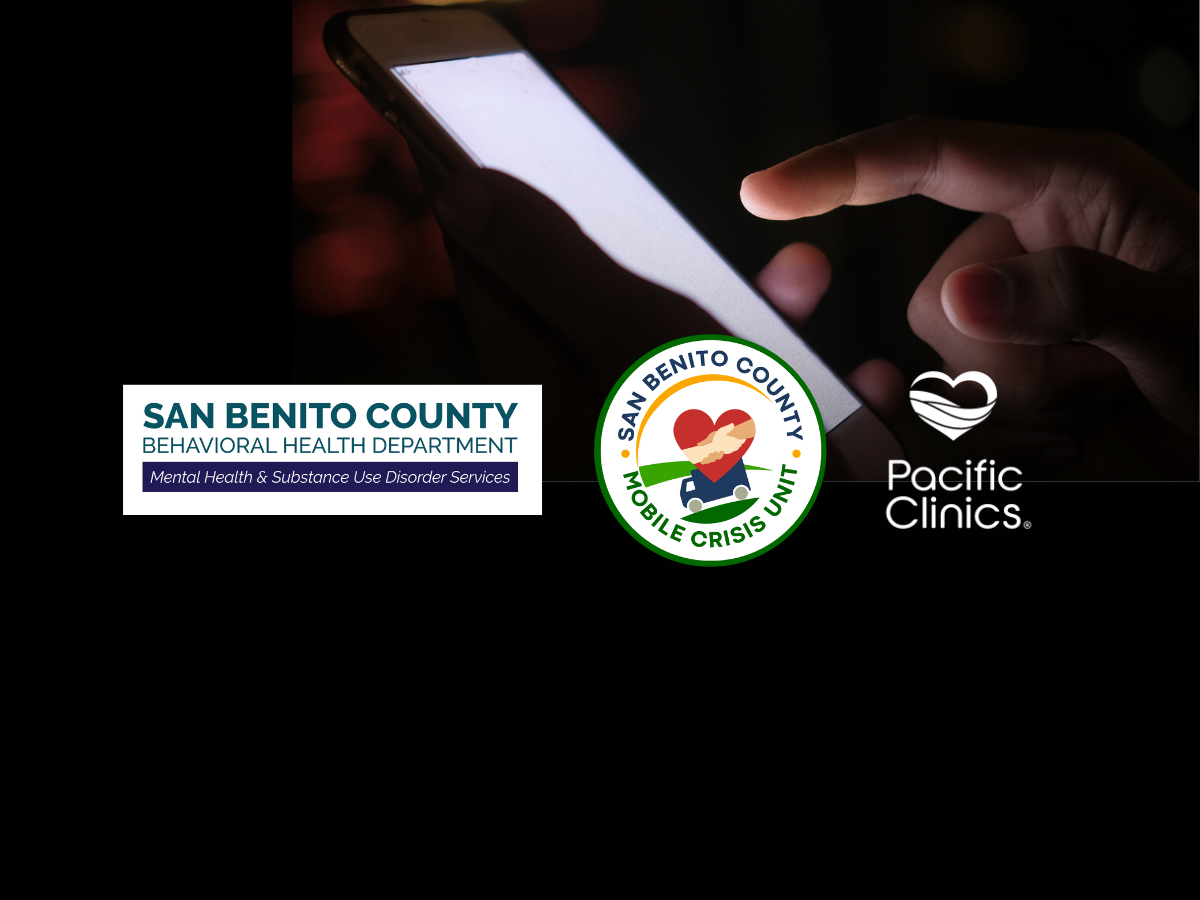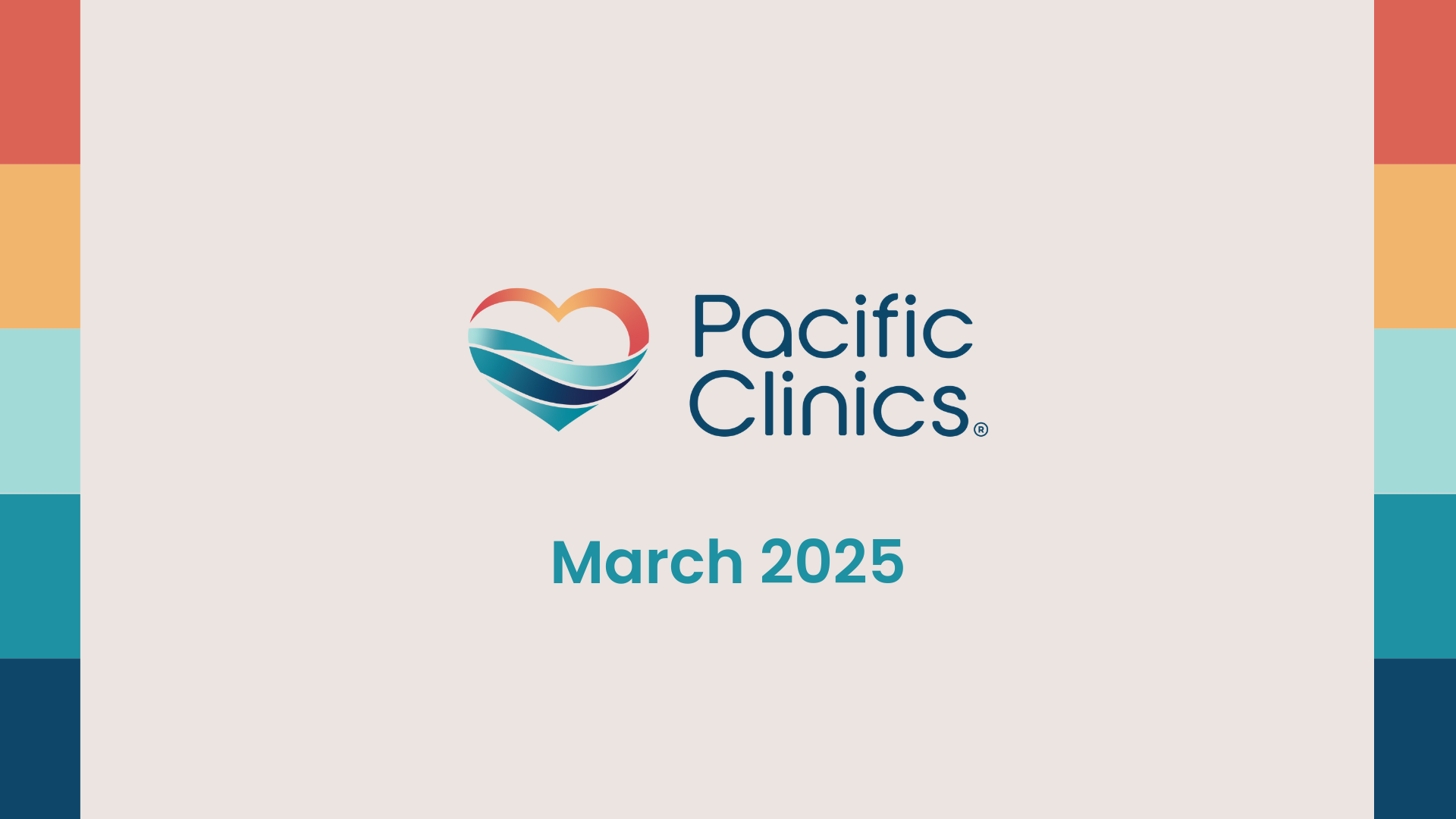Presenters: Director of Data Analytics and Innovation Kristopher Stevens and Psychology Intern Virginia Hatch
Title: Identifying Profiles of Risk among Head Start Children and Families and Examining their Associations with Programmatic Outcomes
Abstract: Properly identifying Head Start children and families at-risk for mental health problems and the social determinants that lead to and maintain their risk as they enter and journey through programs could lead to the effective and efficient allocation of prevention and intervention efforts that maximally benefit families as well as the program staff working with the children and families. This issue is important to examine during the best of times, however, with the changing behavioral health and early education landscapes created by the COVID-19 pandemic and the societal focus on addressing systemic racism and equity, it is more important than ever. The wealth of data available to Head Start programs, such as indicators of children and families’ psychosocial functioning and the social determinants faced by children and families, allow for the application of sophisticated data analytical techniques, such as latent class analysis, decision trees, and random forests, to reliably and accurately build profiles of risk and resilience based on the available data. These profiles of risk and resilience combined with risk triage models, such as response-to-intervention, could inform the development of decision-support systems that aid program leadership and staff to identify at-risk families and effectively and efficiently allocate their efforts and resources to provide children and families with what they need to benefit most from program services. Moreover, these risk profiles could inform to the development and implementation of prevention and intervention strategies that target specific risks to enhance children and families’ wellbeing and school readiness.
With a sample of 1,196 unique children and their families who were enrolled in Head Start services between August 2016 and May 2022, the current study addresses the following question: Can the data currently available to the Head Start programs be used to reliably indicate children and families at-risk, due to mental health risks and various social determinants, of not or minimally benefiting from services? To address this question, the current study utilizes data from several Head Start programs that are part of a large community-based organization providing behavioral health services as well as publicly available data. Data will be drawn from several sources, including, but not limited to: 1) the Head Start programs’ electronic educational records systems which include basic demographics of the child and family, child and family characteristics, social determinants; 2) the Strengths, Needs, and Interests Parent survey (SNIP) that is administered by Head Start programs to caregivers in August and May of each school year; 3) the Child Opportunity Index (COI) which utilizes various US Census data and provides information about risks and social determinants inherent within the neighborhoods the children and families reside; and 4) the Desired Results Developmental Profile (DRDP) which is administered three times during the school year to assess children’s functioning across multiple domains. The first three sources of data will serve as predictor, or explanatory, variables while the fourth will serve as an outcome, or target, variable.
Classification analyses will be used to classify children and families into various risk categories. Additionally, analyses will be conducted to support the classification results, including descriptive analyses of the model variables and sensitivity analyses.
Results of this study could have numerous benefits for the children and families served by Head Start programs as well as school-aged populations. The ability to better identify at-risk families early on could lead to the effective allocation of resources and better programmatic outcomes for the families through the development of decision-support tools that incorporate a problem-solving process. Moreover, these profiles can be utilized to identify potential prevention and intervention strategies that could enhance children and families’ wellbeing as well as their ability to maximally benefit from programming. Results could also lead to the identification of training and service gaps and the development of opportunities to meet those needs. These opportunities for staff combined with increased efficiency in the allocation of their efforts could increase their feelings of efficacy and reduce fatigue and the possibility of burnout. While the focus of this study is on preschool aged children and their families, these methods could be ported out to other educational settings and populations. The wealth of data available in school systems are ripe for the analytical models utilized in the current study as well as other techniques not presented. As stated previously, these issues are more important than ever given the pandemic’s impact on youth and families’ psychosocial functioning as well as laying bare the inequities within our systems.
Register to attend The National Center for School Mental Health’s Annual Conference in Baltimore, MD.








